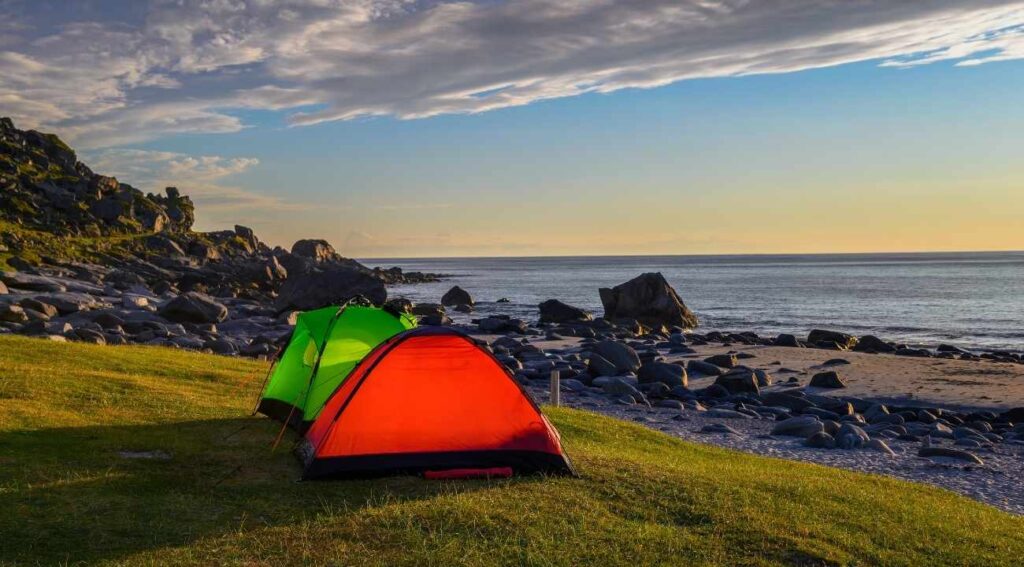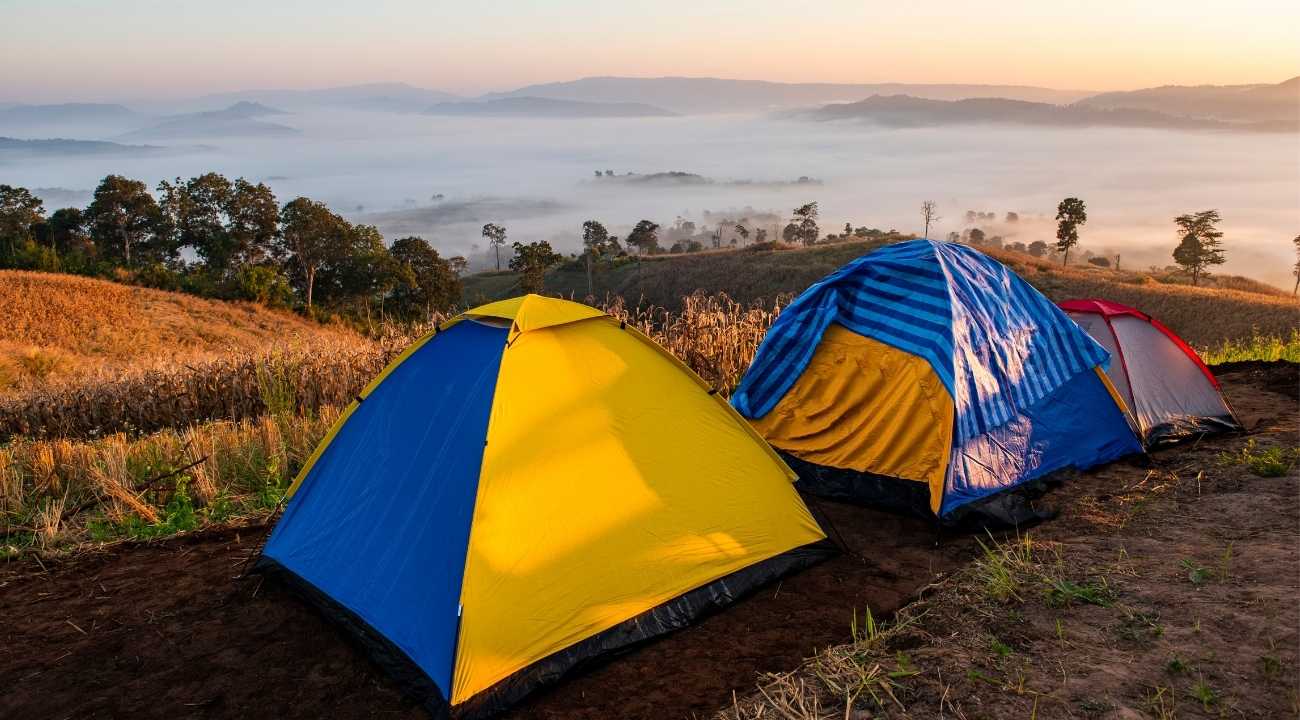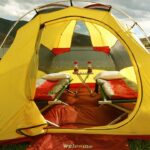As much as we love camping in summer, sleeping in a hot, stuffy tent may not be bearable at times. And if you’re camping out in the middle of the wilderness with no access to electricity, then it becomes way harder to keep your tent cool.
A tent is like a mini greenhouse since it can trap a large amount of heat inside. A tent can overheat for various reasons. From choosing the wrong spot for your tent to not having enough ventilation systems, these issues might result in a bad camping experience for you. Among many other reasons, the most concerning is the lack of ventilation.
When you camp in hot weather and have a tent with no screening or vents, just one entrance and exit, your tent will most likely turn into an oven. Not having enough air circulation inside your tent is another vital reason behind your tent getting extremely hot. However, knowing the key factors that cause your tent to get hot can make it easier for you to figure out how to keep your tent cool even if you don’t have access to electricity.
5 Ways To Cool Camping Tents Without Electricity
Knowing how to cool a tent without electricity might be a lifesaver when camping in the hot summer. So here are some of the ways to stay cool in your tent without electricity.
Choosing The Right Tent
While camping on hot summer days, you need to be careful what kind of tent you’re choosing. In order to keep your tent cool, you need to consider a lot of things like a tent’s shape, size, color, and material. A cotton canvas tent is the best option, especially when you’re camping under extremely hot conditions. If you want to keep your tent cool without electricity, getting a tent made with a breathable material like cotton would be just perfect.
However, they can be a bit expensive, so if you have no problem with the budget, then investing in a cotton canvas would be worth every penny. You can also go for a tent that’s made of nylon or Polyester; they are lightweight and affordable as well.
Make sure your tent has a breathable mesh window and a proper ventilation system. When staying at a tent, keep the entrance and windows of the tent open, so there will be enough air circulation in your tent. Moreover, you can get a tent footprint for your tent, so you don’t have to deal with the heated ground.
Choose Right Location
The temperature you’ll face inside your tent throughout the day and night will be determined by the area where you pitch your tent. Instead of pitching your tent in broad sunlight, try to find a shady spot so your tent doesn’t trap any heat inside. If your campground is in an open area with no trees or natural vegetation and the sun hits directly on your tent, it will overheat. You have to choose a location where you get direct shade from the hills, trees, or other vegetation.
Try to pitch your tent near any water source such as a waterfall, lake, or river. Usually, places that are near water streams are pretty windy. That’s why setting up your tent, particularly in a windy location, is one of the easiest ways to cool your tent without electricity. You can just open the entrance of your tent and face it towards the river so that you can enjoy the nice, cool breeze inside the tent.

Portable Battery Fan
When sleeping in a tent, stagnant air can be your worst enemy. Thus any amount of circulation inside your tent can help you feel more at ease. The weather around your campsite may not always be nice and breezy. In that case, a portable battery-powered fan can be your savior. Besides, you don’t even have to look for any power socket as this fan runs on a battery.
To power this portable fan, you just need to bring some batteries with you. Although the portable fan is not as strong as electric fans, every bit of breeze might help bring the temperature down inside your tent. When the air is absolutely stagnant, battery-powered fans can aid to produce airflow within your tent.
The majority of the campers store their food or drinks in a cooler. You can also utilize the cooler for toning down the temperature inside your tent. Simply open the ice-filled cooler and keep it inside the tent to cool the air. And if you don’t want to melt all the ice, take a bowl, put some ice on it, and keep it in front of the battery fan. It helps to lower the temperature and make you feel more relaxed.
Reflective Space Blanket And Groundsheet
Sometimes your tent may have to endure direct sunlight as you may not always get to set up your tent in a perfectly shaded spot. In this situation, a reflective space blanket or a reflective sunshade can come in really handy. This reflective space blanket or reflective tarp block sunlight while maintaining a cool environment inside your tent.
Simply throw a space blanket on top of your tent, and it will automatically reflect the heat away from the tent. Make sure the reflective space blanket’s shiny side face toward the sun and covers the whole tent; otherwise, it may not work properly.
Another way you can insulate your tent from heat is by installing a groundsheet beneath your tent. Since the ground can soak up a significant amount of heat, the groundsheet makes sure this heat doesn’t radiate through your tent. To insulate your tent floor, you can use a tarp, tent footprint, or even cardboard would do the job.
Pitch Your Tent At The Right Time
Many campers make the mistake of setting up a tent as soon as they arrive at the campground, even though they don’t use their tent until nighttime. Besides, you’ll be mostly occupied with other camping activities during the day, so you won’t need to use the tent that often.
If you pitch the tent early, the heat of the midday and afternoon sun will elevate the temperature inside the tent. This heat can last far until the evening when you want to use and relax in your tent. The ideal time for setting up your tent would be just before or after sunset. As a result, you’ll be able to sleep in a cool and comfy tent.
Since you may not always find campsites that provide your electric supply, so learning how to cool a tent without it can make a big difference in your camping experience. To conclude, ventilation and proper air circulation is the key to keeping your tent cool without electricity. Hopefully, these simple tips and tricks can come in handy, especially when you’re camping in hot weather without accessing electricity.

William Arrovo seeks thrills and laughter in everything he comes across. He is a fun loving person with a zest of exploring the breathtaking places around the globe. He feels content in sharing his experiences of travelling to various countries. He is grateful about enriching himself with a myriad of cultures and rejuvenating his soul while staying outdoors.









Leave a Comment